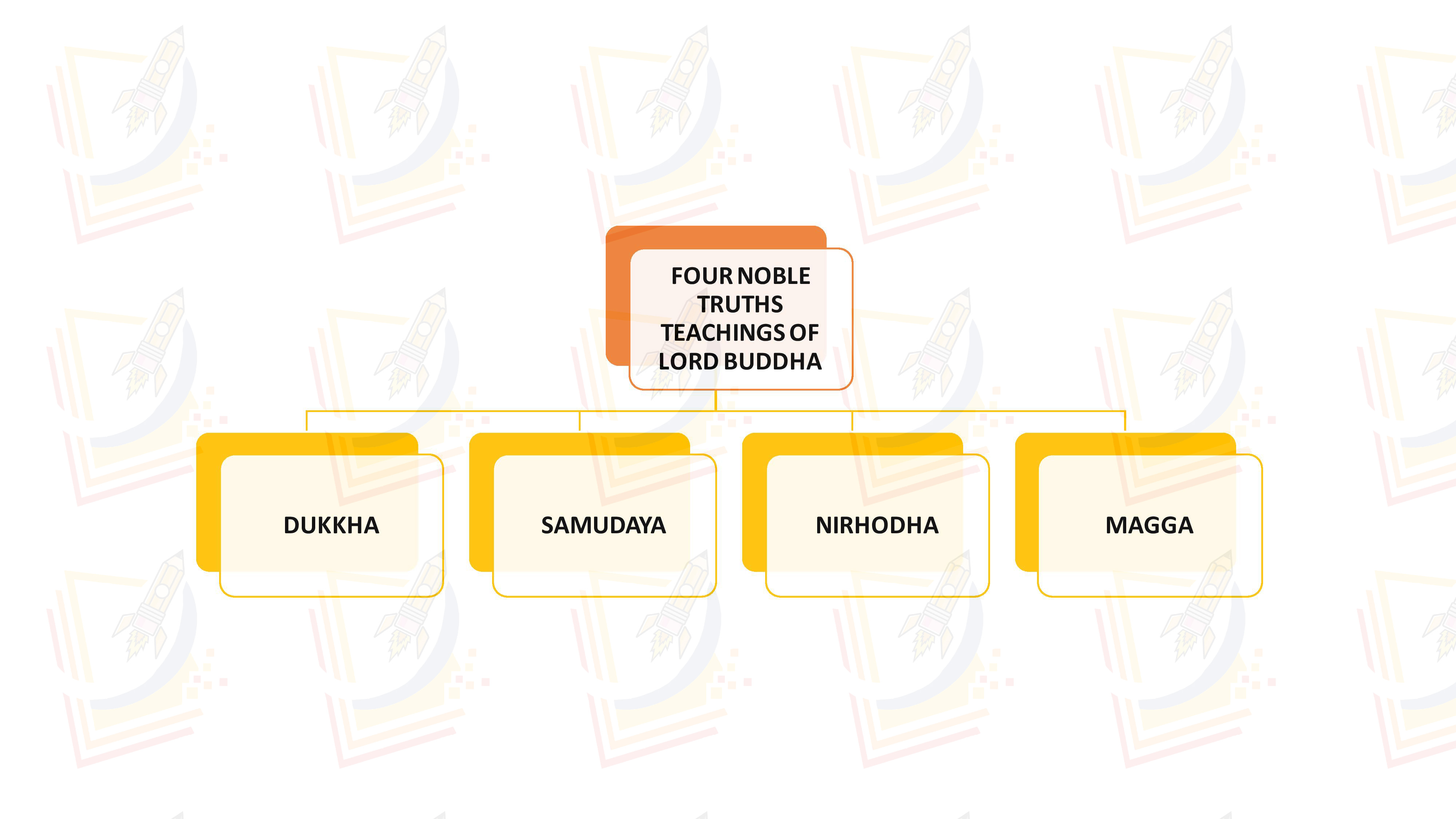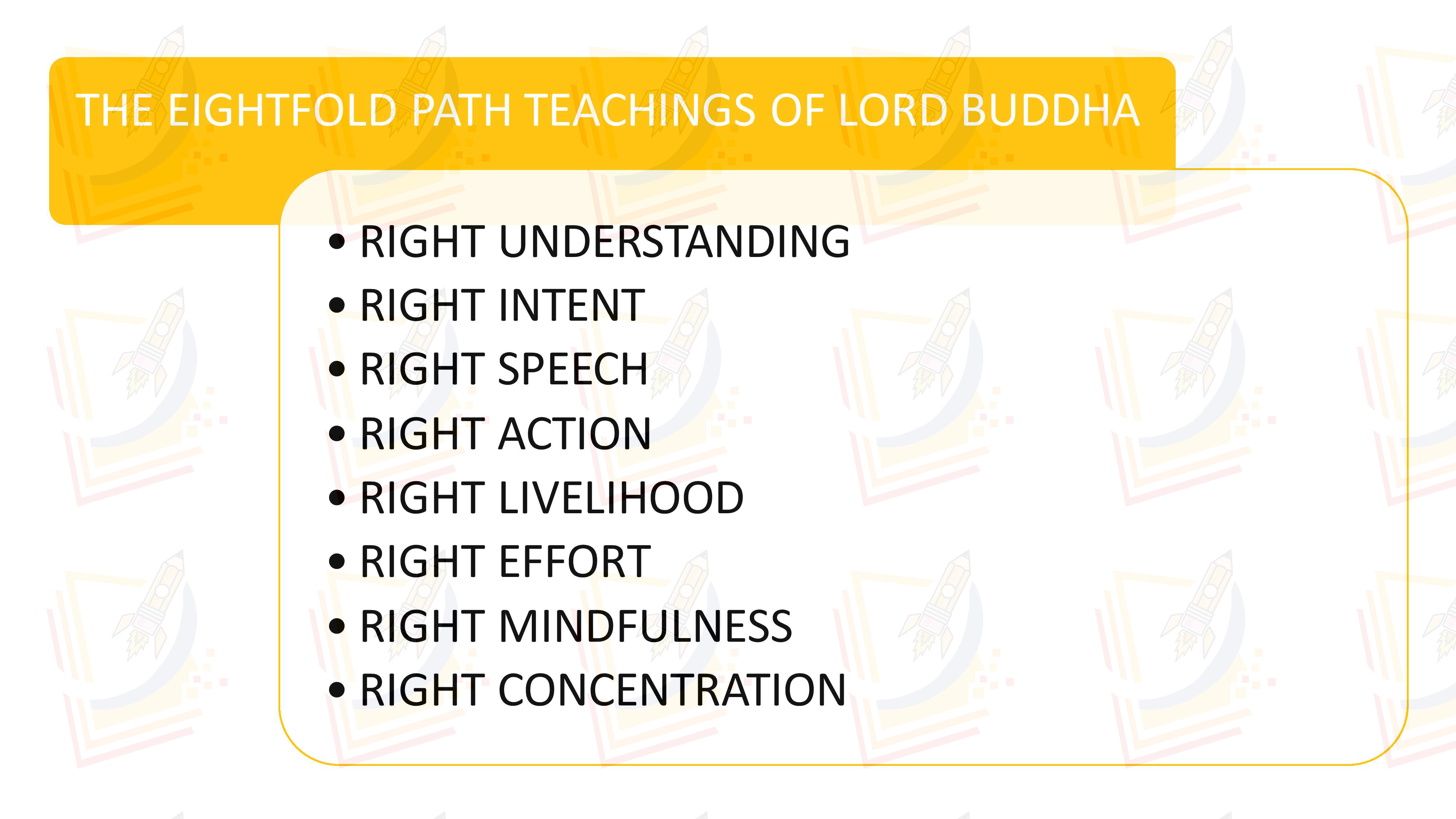INTRODUCTION
The Childhood Name Of Gautam Buddha Was Siddhartha While He Was Also Known As Sakyamuni Or Tathagata Because He Belonged To The Sakya Clan, His Family Name Was Gautam. He was a kshatriya prince and son of Suddhodana , the Sakya ruler of Kapil astute in Nepal.
- CHILDHOOD : Buddha's upbringing was luxury with love and affection, received Hugh education, but he liked to remain in loneliness.
- MARRIAGE : At 17 he got married to princess Yashodhara. But his interest remained towards spiritual matters.
- FOUR SCENES AND RENUNCIATION : while Buddha was travelling the city he saw people who were suffering and realised life of humans is full of miseries. He saw a saint and was impressed by him. He wanted to find a way to attain Nirvana so at the age of 28 he left his home and went to forest in quest of truth , this event came to be known as Great Renunciation.
- ENLIGHTENMENT : Buddha after leaving his home went to Rajgriha and became disciple of two hermits but wasn't dissatisfied, after which he went into forest for six years and practised severe penance. This reduced him to skeleton, at last he sat down under a peepal tree near Gaya( Bodh Gaya) fir meditation and found the way of enlightenment which came to be known as Great Enlightenment.
- PREACHING HIS RELIGION : After attaining the Divine Knowledge, Buddha began to preach his new religion, his first sermon was delivered in Deer Park at Sarnath in Banaras which was known as Dharma Chakra Parivartan in Buddhism. Buddha spent 45 years of his life preaching his religion in magadha.
- DEATH : Buddha at the age of 80 reached Pava, after which he got ill and suffered from dysentery. He delivered his last message to his disciple Ananda in 487 B.C. on the day of Vaishakh Purnima , this event is known as Mahaparinirvana .
TEACHINGS OF LORD BUDDHA :
- FOUR NOBLE TRUTHS :
The Four Noble Truths are the central teaching of the Buddha and form the foundation of the Buddhist tradition.
They are:

- THE TRUTH OF SUFFERING (DUKKHA) : This truth states that suffering, in one form or another, is an inherent part of human existence. Dukkha can refer to physical pain, emotional distress, and the general sense of dissatisfaction and incompleteness that characterizes human life.
- THE TRUTH OF THE CAUSE OF SUFFERING (SAMUDAYA) : This truth states that the cause of suffering is craving and attachment. When we crave and cling to things, we experience disappointment and dissatisfaction when we don't get what we want or lose what we have.
- THE TRUTH OF THE CESSATION OF SUFFERING (NIRHODHA) : This truth states that it is possible to end suffering by letting go of craving and attachment. Through the cultivation of mindfulness and wisdom, we can overcome our clinging and attain a state of lasting peace and happiness.
- THE TRUTH OF THE PATH TO THE CESSATION OF SUFFERING (MAGGA) : This truth states that there is a path or way to end suffering, which is known as the Eightfold Path. The Eightfold Path consists of right understanding, right intention, right speech, right action, right livelihood, right effort, right mindfulness, and right concentration. By following this path, one can attain the cessation of suffering and the attainment of Nirvana.
- THE EIGHTFOLD PATH :
The Eightfold Path is a set of teachings and practices in Buddhism that provide a guide for achieving enlightenment, or the state of being free from suffering and the cycle of rebirth. The Eightfold Path consists of eight interconnected steps or "limbs" that must be followed in order to reach spiritual enlightenment. These steps are:

- RIGHT UNDERSTANDING : This step involves gaining a clear understanding of the Four Noble Truths, which are the fundamental teachings of Buddhism. These truths state that suffering exists, suffering arises from craving and attachment, suffering can be ended, and the path to the cessation of suffering is the Eightfold Path.
- RIGHT INTENT : This step involves having a strong commitment to following the Eightfold Path and the cultivation of pure intentions. It involves developing the right attitude towards others and the world, and striving to act in ways that are beneficial to all.
- RIGHT SPEECH : This step involves speaking truthfully and kindly, avoiding harmful and harmful speech, and refraining from gossip and idle talk. It also involves being mindful of one's speech and choosing words that are kind and beneficial.
- RIGHT ACTION : This step involves taking actions that are moral, ethical, and beneficial to others. This includes avoiding harmful and destructive actions, such as stealing or killing, and instead acting in ways that promote kindness and compassion.
- RIGHT LIVELIHOOD : This step involves choosing a way of life that is morally and ethically sound, and which does not involve harming others. It involves refraining from occupations that are harmful to others, such as those that involve weapons or drugs.
- RIGHT EFFORT : This step involves putting in the effort to overcome negative states of mind and cultivate positive ones. This includes being mindful of one's thoughts, emotions, and actions, and making an effort to change them for the better.
- RIGHT MINDFULNESS : This step involves being mindful of one's thoughts, emotions, and actions, and being aware of the present moment. It involves being aware of one's body, mind, and surroundings, and using this awareness to cultivate wisdom and insight.
- RIGHT CONCENTRATION : This step involves developing the ability to focus and concentrate the mind. This includes meditating and using techniques such as mindfulness to achieve a state of deep concentration and mental stillness, which is necessary for spiritual development and enlightenment.
- RIGHT LIVING :
- no one will kill any living being
- No one to speak lie
- No one to take what us not given to him
- No one be unchaste
- No intake of intoxicants
- AHIMSA : Buddha focused on non violence, he said men should love both men and animals, he should consider killing as a sin.
- NIRVANA : Nirvana was considered to be the highest aim of human life by Buddha, as it ends all dearies and free humans from the cycle of birth and death. Nirvana can be attained by an eight fold path.
- MORALITY : Buddha laid emphasis on morality, he believed men could achieve happiness by good deeds and moral character.
- SILENCE ABOUT EXISTENCE OF GOD : Buddha neither denied the existence of gjd but nor did he considered it necessary for attainment of nirvana. He believed that one Supreme power governs the world.
- BROTHERHOOD : Buddha believed that people should live in peace and harmony, and hatred could be dealt with love and people must have feelings of brotherhood.
- DENIED CASTEISM : Lord Buddha was against the caste system. He believed that every person is equal and mens caste is defined by his deeds.
- NO BELIEF IN HARD PENANCE : Lord Buddha was against the system of torturing oneself as he himself adopted the path of penance for six years but found it of no use.
- TRANSITORINESS OF WORLD : Lord Buddha believed that everything in the world is changeable, so it is better to kill the desire and leave the greediness.
CONCLUSION :
From above discussion it can be concluded that Mahatma Buddha focused on Nirvana and peaceful lifestyle. He wanted people to be free from desires and attain the path of Nirvana through the Eightfold path. He became popular not only in India but also in World too.
BOOK REFRENCE( CLICK TO BUY )
A History of India, Vol. I, Penguin Books, 1966 - Thapar, Romila
